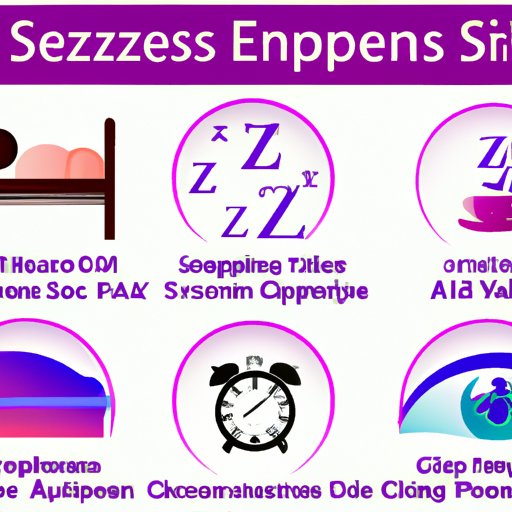
Introduction
Seizures in sleep can occur in both adults and children, affecting up to 30% of those with epilepsy. However, many individuals who have experienced a seizure in their sleep may not know what it was or how to respond. This article aims to provide comprehensive information to readers who have experienced seizures in their sleep.
Causes and Symptoms
There are several types of seizures, but generalized tonic-clonic seizures and complex partial seizures are the most common types that occur during sleep. Symptoms can range from mild to severe and may include uncontrollable muscle movements, changes in consciousness, and vocalizations. Risk factors for seizures in sleep include genetics, brain injuries, and epilepsy.
Before a seizure, an individual may experience an aura, or warning sign. During the seizure, they may lose consciousness and experience muscle rigidity. After the seizure, they may feel disoriented or tired. It’s important to note the duration and frequency of these symptoms, which can help healthcare professionals diagnose and manage sleep seizures.
Treatment Options
Treatment for seizures in sleep often involves medication, such as anticonvulsants, benzodiazepines, and barbiturates. In some cases, surgery may be recommended to remove the part of the brain causing seizures. However, it’s important to seek medical attention for seizures in sleep, as untreated seizures can result in injury or even death.
Coping Strategies
While medication and treatment can help manage seizures in sleep, there are also several coping strategies individuals can adopt to help manage this condition. Relaxation techniques such as deep breathing, yoga, and meditation can help manage anxiety and stress, which can trigger seizures. Lifestyle modifications such as regular exercise, healthy eating habits, and good sleep hygiene can also promote overall health and wellbeing. Creating a safe sleeping environment, such as avoiding alcohol and drugs, can also help minimize the risk of seizures in sleep.
Living with Seizures
Living with seizures can be a challenging and isolating experience. However, seeking mental health support and practicing proactive self-care can help individuals manage their seizures and improve their quality of life. Regular exercise, healthy eating habits, and stress management techniques can help manage overall health and reduce the risk of seizures. Seeking support from mental health professionals, support groups, and peers can also help individuals cope with the emotional impact of seizures.
Seizure First Aid
If you witness someone experiencing a seizure in sleep, it’s important to keep them safe from harm. Do not restrain them or put anything in their mouth. Instead, position them on their side if possible and remove any objects that may cause harm. Observe the duration of the seizure and call for emergency services if any complications arise. After the seizure, remain with the person and provide emotional support as needed.
Conclusion
Seizures in sleep can be a frightening experience, but understanding the causes, symptoms, and treatment options can help individuals manage this condition. Coping strategies such as relaxation techniques, lifestyle modifications, and proactive self-care can also help reduce the impact of seizures on overall wellbeing. If you are experiencing seizures in your sleep, it’s important to seek medical attention and support from mental health professionals and peers. With the right treatment and support, individuals can manage their seizures and improve their quality of life.





